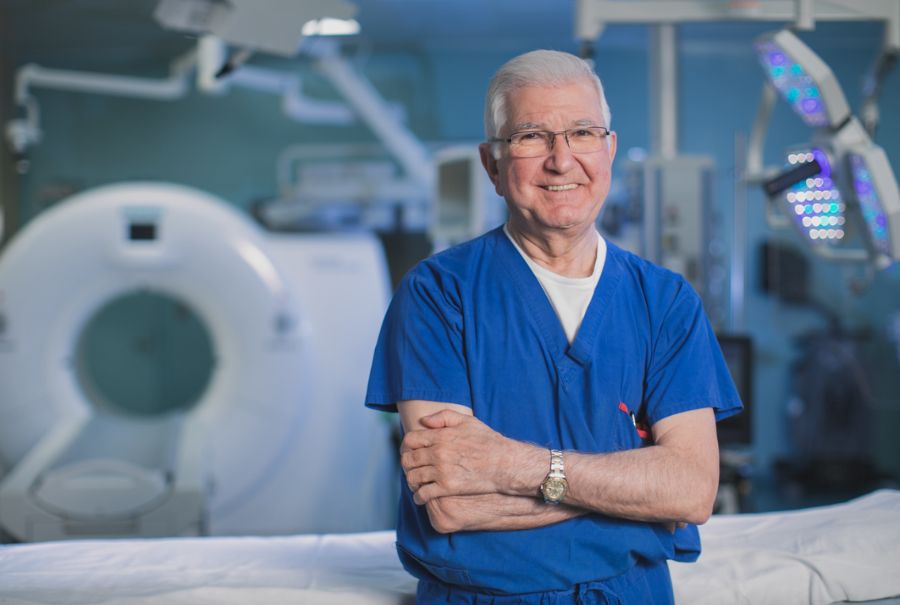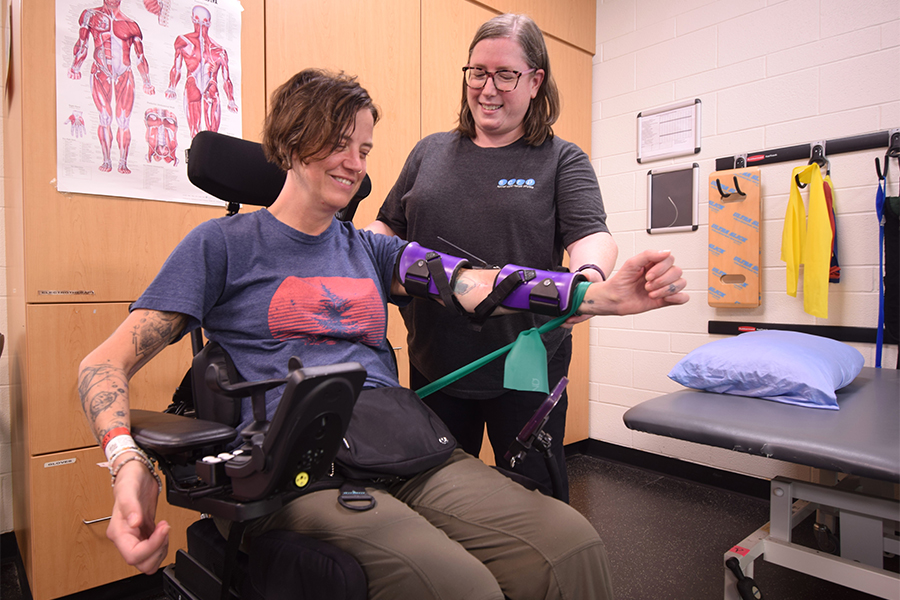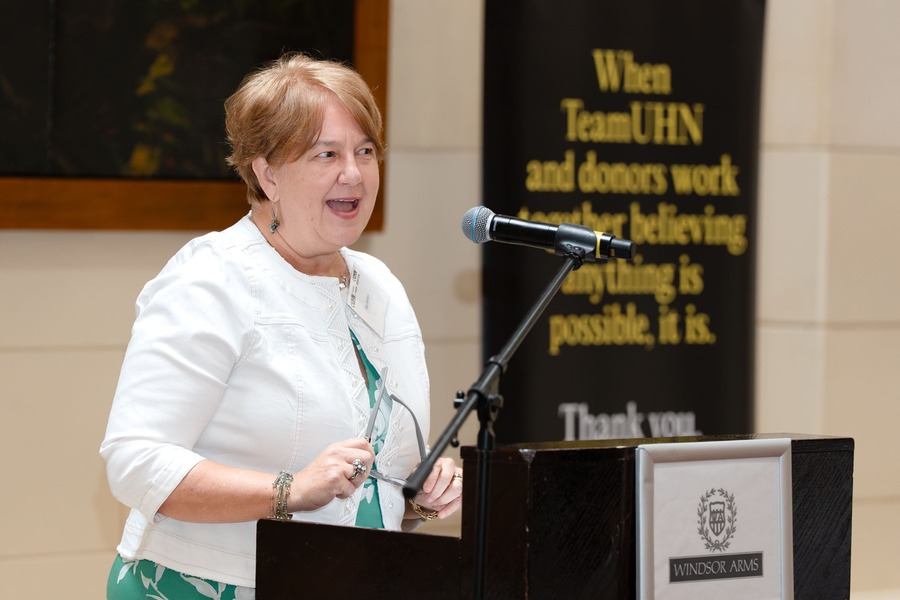UHN physiotherapists who worked with Patrick Wells as he recovered from COVID-19, (L to R), Vincent Lo of Toronto General Hospital’s (TGH) Medical/Surgical Intensive Care Unit, Anne-Marie Bourgeois of TGH’s General Internal Medicine (GIM) Unit, and James Chen of TGH’s GIM Unit. (Photo: UHN)
After about five days experiencing a mild cough and an increasingly upset stomach, Patrick Wells walked himself to St. Joseph’s Hospital (SJH) in Toronto’s west end.
“From there, I just have little flashbacks,” Patrick recalls. “I remember the first COVID-19 test, a CT scan, and then at one point about five people in the room saying they needed to put in a breathing tube.
“The next thing I remember is waking up in the ICU… the scariest part was the tube down my throat.”
Diagnosed with COVID-19 on March 29 at SJH, Patrick was transferred to Toronto General Hospital’s (TGH) Medical Surgical Intensive Care Unit (MSICU) five days later. He spent two weeks in critical care, the majority of which he was intubated, paralyzed and sedated.
The breathing tube prevented him from speaking; his shaking hands prevented him from effectively using a communication board or his phone. Once the breathing tube was finally removed, it took several days for his voice to strengthen beyond a raspy whisper.
Patrick is effusive in his praise for the entire care team and credits the physiotherapists (PTs) with accelerating his recovery from COVID-19.

Patrick Wells, pictured here before he became sick with COVID-19, says he’s grateful for the compassionate and exceptional care he received at Toronto General Hospital. (Photo: Courtesy Patrick Wells)
May is National Physiotherapy Month, a time to celebrate PT staff who work in collaboration with patients and interprofessional teams to maximize function and physical activity. During COVID-19, physiotherapists (PTs) have mobilized quickly and evolved their practice to meet the needs of coronavirus patients.
“Everyone was awesome. I loved physio. I would look forward to it each day,” he says.
“It was something different and I really wanted to get moving and regain my independence.”
It’s all about teamwork
The ICU, the illness, and two weeks of paralytic medication and immobility had taken a physical toll on Patrick’s health. While still in MSICU, he was finally “stable and capable” to start working with PTs.
During his first session, he required the assistance of two therapists to sit at the edge of the bed for mere minutes. Still on a breathing tube, Patrick’s activity tolerance was low, his balance poor, and he could not stand.
“Patrick’s story is one of many that highlights some of the challenges the COVID-19 situation has brought to PT practice,” says Anne-Marie Bourgeois, physiotherapist at the Toronto General Hospital.
In addition to operating in full personal protective equipment, PTs have had to adapt their practice to best treat this new vulnerable patient population.
“The level of weakness and the necessity to adapt mobility techniques that minimize exposure risks to PTs has often led to more collaboration for treatments, accentuating the teamwork and patient-centred approach that exists at UHN,” says Vincent Lo, a PT in the MSICU.
PTs have been helping in other novel ways. The sheer volume of patients requiring proning – placed on their stomach for extended periods of time to help them breath better – has prevented early mobility treatments.
“Many of our patients are too sick to mobilize for quite some time, and so we are now assisting with proning, and providing consults around repositioning,” says Vincent Lo, a PT in the MSICU. “This is new territory for us in terms of the volume of patients requiring proning, but we are all working together to keep moving forward and provide the best care possible.”
The road to recovery
Two weeks after his original diagnosis, Patrick was moved from TGH’s MSICU to a COVID-19 ward. He spent almost one week working with Anne-Marie and fellow TGH PT James Chento regain his independence.
“Since COVID-19 patients must remain in their room at all times, PTs have been faced with the challenge of preparing patients for the physical demands of a day at home, within the confines of their hospital rooms” says Teresa Chen, a PT at Toronto Western Hospital (TWH).
That means PTs at both TWH and TGH have had to get creative. For Patrick, a mock step and railing were rigged up to provide an adequate and specific training stimulus in preparation for his return home.
On April 19, Patrick became TGH’s first patient with COVID-19 to be discharged home, where he continues to recover well. He is grateful for the compassionate and exceptional care he received from his healthcare team.
“I can’t thank them enough,” he says. “People keep congratulating me, but they should be congratulating everyone who worked with me.”


